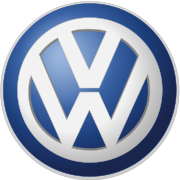
| Monday, November 05, 2012 | Archives | Advertise | Online Buyer's Guide | FLEETSolutions |
Has Volkswagen Reinvented The Automobile?
 The latest iteration of the VW Beetle is far more revolutionary than might initially meet the eye. That’s because the real breakthrough comes in the way it – and virtually everything else that will now be developed by the German automotive giant – is being designed and manufactured. Going forward, any model using the new MQB platform -- from the little Polo to the big Passat -- could roll down the same VWAG assembly line. The latest iteration of the VW Beetle is far more revolutionary than might initially meet the eye. That’s because the real breakthrough comes in the way it – and virtually everything else that will now be developed by the German automotive giant – is being designed and manufactured. Going forward, any model using the new MQB platform -- from the little Polo to the big Passat -- could roll down the same VWAG assembly line.If the project proves stable, it could yield a thirty percent reduction in the cost of building the typical vehicle – while allowing the maker to add new models for surprisingly little investment – and in a fraction of the time it normally takes to bring a vehicle to market. The maker currently offers 245 different models shared among its dozen brands and the vast majority, going forward, will share the same underpinnings found in the latest Beetle and the even newer remake of the Golf. Codenamed MQB, this platform will act as the foundation, in fact, for a dizzying array of seemingly unrelated models – everything from the subcompact Volkswagen Polo to the midsize Passat sedan as well as the VW Tiguan and Audi Q3 crossovers. A second platform, dubbed MLB, will serve products as diverse as the Audi A4, A6, and A8 sedans; the new Porsche Macan sport-crossover; and possibly even a future Bentley, hints Dr. Ulrich Hackenberg, Volkswagen’s Board Member in Charge of Technology. Audi, he notes, is overseeing the development of this platform which can mount its engine in either the front of the vehicle or the rear. A third platform, codenamed MSB, will handle performance machines and bigger vehicles, especially those using front engines and rear or all-wheel-drive. No surprise, this package is the responsibility of the newest member of the 12-brand VW family, Porsche. A final platform — known as NSF, for New Small Family — was a late addition and will focus on a new generation of microcars, such as the Volkswagen Up and perhaps even the tiny, low-cost offerings that the German maker is considering for an all-new brand specifically targeting emerging markets such as Indonesia or India. Each platform has wide flexibility in terms of the basic size of the vehicle and the sort of powertrain technology that can be used. Notably, one of the goals is to essentially create a computer-like plug-and-play toolkit of different powertrains so any individual VW product will be able to use an assortment of gas and diesel engines, hybrids, plug-ins, pure battery-electric drive, and other technologies under development – such as a hydrogen fuel cell drive. But the biggest benefit will come from driving down product development and production costs. On the manufacturing side, if the process is stable, VW expects to save thirty percent on total assembly costs once the new platform strategy is fully implemented. Perhaps equally important is that this is a key enabler to produce even more niche and specialty vehicles. That’s particularly critical in the modern automotive market where customers won’t settle for me-too products but want vehicles that meet their precise needs and desires. VW isn’t the only global maker working to reduce development and production costs even while making its platforms more flexible. Toyota has similar goals, for one. But it puts VW "in the hunt" as it sets out an ambitious goal to become one of, if not the, best-selling and most profitable automaker worldwide by the end of the decade. |
 |
NAFA Fleet Management Association 125 Village Blvd., Suite 200 Princeton, NJ 08540 Telephone: 609.720.0882 Fax: 609.452.8004 |








